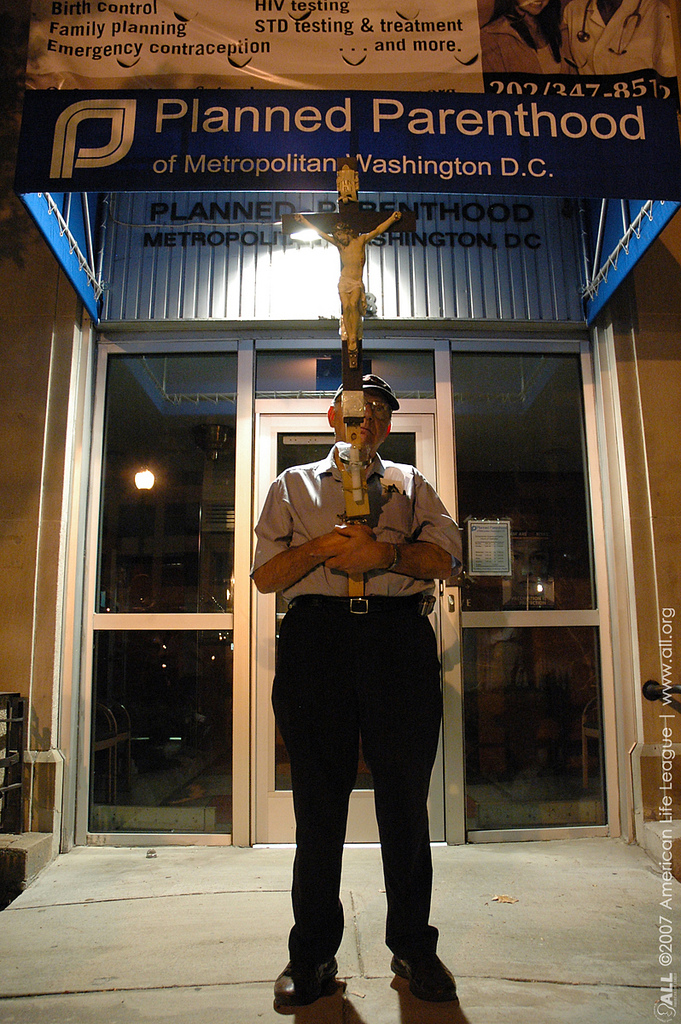
Dick Retta, sidewalk counselor, prays in front of the Metro D.C. Planned Parenthood abortion clinic.
Guest post by Daniel Bennett
Yesterday, a unanimous Supreme Court ruled that free speech trumps undisturbed access to abortion clinics. Ruling in McCullen v. Coakley, the justices unanimously struck down a Massachusetts law enacting 35-foot “buffer zones” around abortion clinics.
Not surprisingly, pro-life groups hailed the ruling while reproductive rights advocates denounced it. But this wasn’t about abortion. It was a decision about free speech. Justices from the left and the right came together to defend the right of peaceful protesters who happened to be speaking out against abortion.
The Court stopped short of banning all buffer zones. Writing for the Court, Chief Justice Roberts emphasized that states can’t create sweeping buffer zones to prevent obstruction on public property around abortion clinics. Instead, states should enact smaller, targeted measures to curtail obstructions at clinics.
States must wait until there have been actual interference with clinics’ operations before even considering taking action. Prior to this ruling, courts have taken the government at its word that buffer zones are necessary. No longer. States can react to problems; they can’t anticipate them.
Just 14 years ago, the Court decided the same issue differently. In Hill v. Colorado (2000), the Court upheld a state law restricting activity inside a buffer zone around abortion clinics. This time around, the justices stopped short of overturning Hill, but the way McCullen is pronounced, the legality of buffer zones like those in Hill will be much, much harder to prove.
Ultimately, the McCullen ruling got about as close to sounding the death knell for abortion clinic buffer zones as it could without actually doing so. Even Justice Ginsburg—hardly a passive supporter of abortion rights—not only signs on to a unanimous opinion striking buffer zones, she fails to offer a concurrence hinting at how future zones could survive the Court’s scrutiny. Buffer zones may exist in theory, but creating them in practice will be very difficult.
What is certain is that the Court is continuing its strong stand in favor of protecting freedom of speech, even when it conflicts with other protected rights. This isn’t a win for only pro-life protesters. It’s a win for any protester.
Daniel Bennett, PhD, researches the conservative legal movement. He will be joining the faculty at Eastern Kentucky University this fall.





